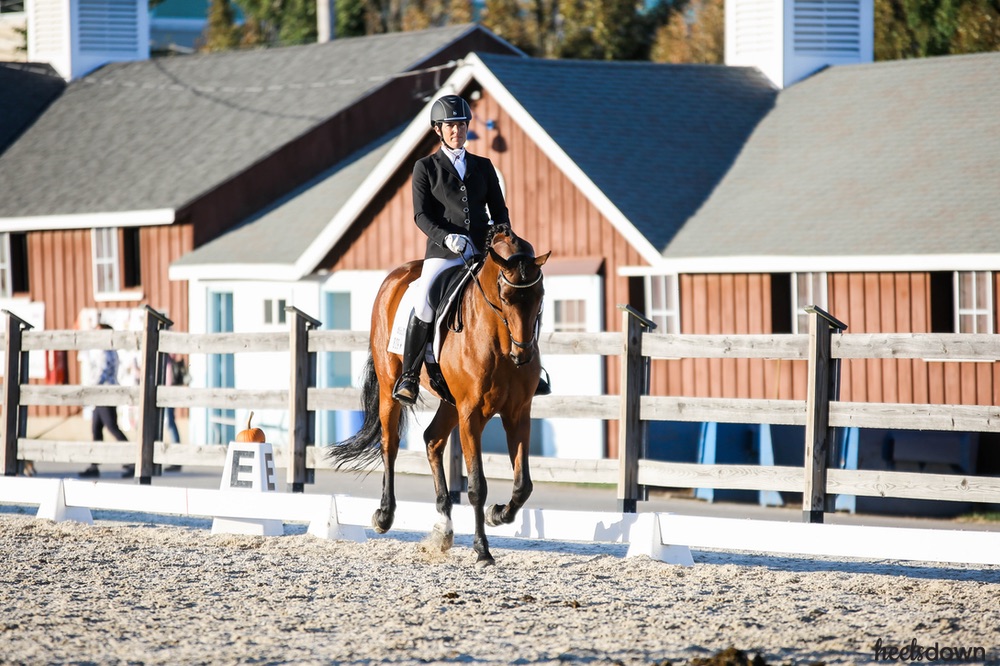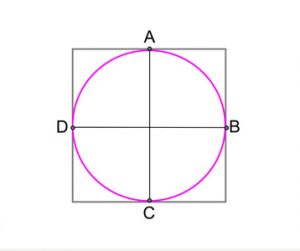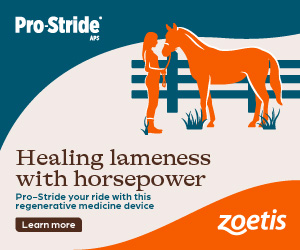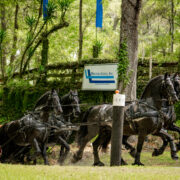Tight On Space? Here’s A Simple Exercise For Small Arenas

By Sally Spickard
Not all riders have the luxury of an expansive arena or field to train in, so they make do with what they have. But there are only so many laps around a cramped indoor that you can do before both you and your horse are bored to tears. We consulted Grand Prix dressage rider Eiren Crawford for her favorite exercise to do in small spaces.
This is easy to do if you are cramped for space. I like to do this on a 20-metre circle, but you could try 15 or 10 metres if you’re really good. In this diagram, the letters are not dressage markers, but just chosen to give location points. On this circle, you’ll do these steps:
1. Canter one and one quarter circle
2. Trot half of a circle
3. Repeat

I pick markers for the four quarters on my circle and do trot-canter-trot-canter transitions at very specific points. If I am trotting on the right rein, I would pick up my canter at “A”, canter one and one quarter circles, and transition to trot at “B”, then ride half of a circle of trot, pick up my canter again at “D”, canter one and one quarter circles, and so on.
I like to have that extra quarter circle of canter because then the transition points keep moving – otherwise I find the horses anticipate the transitions and take over. Staying specific about the places where I will do my transitions make me prepare and execute them with more focus, rather than just riding around and doing them when I feel like it.
This is a great exercise for horses of almost any stage of training – it is super to work young horses in improving good quality transitions and for the older or more advanced horses, I love trot canter transitions to get them really using their whole bodies. I use them almost every day in the warm up for my Grand Prix horse! I find most horses will get sharper to my aids and a bit quicker hind legs if I keep the transitions forward.
Here are a few things to think about:
Ride a Good Circle
It is important that you ride a good, regular shaped circle. If your lines are unbalanced or inaccurate, it changes the horses balance and doesn’t set you up for a good transition up or down. Also, you may as well always practice a good line, because I’ve yet to ride in front of a judge that gives me extra points for offering any sort of artistic interpretation of either the size or shape of a circle specified in a test!
Softening Contact
Think about softening the contact after every transition, even if it is just for one or two steps. The sooner I can soften the reins after a transition without losing the tempo/momentum/swing, the sooner I know the horse is listening to my seat and not depending on my hands to balance. This is for transitions both up and down!
Sit The Trot
Finally, if you are a rider who doesn’t love sitting the trot, you may have noticed that often the horse will have his bounciest, most expressive trot right after the canter. I recommend you challenge yourself to sit the trot anyway in this exercise, and keep in mind it’s only half of a circle at a time to sit. Dig in to your core muscles, don’t grip with your legs, and get better at sitting! It will only improve if you don’t avoid it, and this exercise keeps everything changing quickly so you don’t have to exhaust yourself.”


